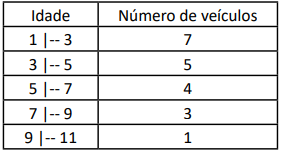No dia 12 de janeiro de 1861, Dom
Pedro II assinou o Decreto nº 2.723, que
fundou a Caixa Econômica da Corte. Desde
então, a CAIXA caminha lado a lado com
a trajetória do país, acompanhando seu
crescimento e o de sua população. A CAIXA
sempre esteve presente em todas as principais
transformações da história do país, como
mudanças de regimes políticos, processos de
urbanização e industrialização, apoiando e
ajudando o Brasil.
Com sua experiência acumulada,
inaugurou, em 1931, operações de
empréstimo por consignação para pessoas
físicas; três anos depois, por determinação do
governo federal, assumiu a exclusividade dos
empréstimos sob penhor, o que extinguiu as
casas de prego operadas por particulares.
No dia 1º de junho do mesmo ano, foi
assinada a primeira hipoteca para a aquisição
de imóveis da Caixa do Rio de Janeiro.
Em 1986, a CAIXA incorporou o Banco
Nacional de Habitação (BNH) e assumiu
definitivamente a condição de maior agente
nacional de financiamento da casa própria e de
importante financiadora do desenvolvimento
urbano, especialmente do saneamento
básico. No mesmo ano, com a extinção do
BNH, tornou-se o principal agente do Sistema
Brasileiro de Poupança e Empréstimo (SBPE),
administradora do FGTS e de outros fundos do
Sistema Financeiro de Habitação (SFH).
Quatro anos depois, em 1990, iniciou
ações para centralizar todas as contas
vinculadas do FGTS, que, à época, eram
administradas por mais de 70 instituições
bancárias.
Desde o início, alinhada às necessidades
da população.
Ao longo de sua trajetória, a CAIXA
vem estabelecendo estreitas relações com a
população ao atender às suas necessidades imediatas, como poupança, empréstimos,
FGTS, Programa de Integração Social (PIS),
Seguro-Desemprego, crédito educativo,
financiamento habitacional e transferência de
benefícios sociais.
Também deu ao povo brasileiro a
chance de sonhar com uma vida melhor,
com as Loterias Federais, das quais detém o
monopólio desde 1961.
O ano de 1969 foi um dos marcos
na história da CAIXA. O Decreto-Lei Nº 759
daquele ano a constituiu como uma empresa
pública e deu a ela diversas obrigações e
deveres, com foco em serviços de natureza
social, promoção da cidadania e do
desenvolvimento do país.
Desde sua criação, a CAIXA não parou
de crescer, de se desenvolver, de diversificar
e ampliar suas áreas de atuação. Uma prova
é seu Estatuto Social, renovado sempre que é
preciso se adaptar à realidade dos brasileiros.
A última atualização foi em 4 de agosto de
2021. A CAIXA, além de atender a correntistas,
trabalhadores, beneficiários de programas
sociais e apostadores, acredita e apoia
iniciativas artístico-culturais, educacionais e
desportivas em todo o Brasil.
Hoje, a CAIXA tem uma posição
consolidada no mercado como um banco
de grande porte, sólido e moderno. Como
principal agente das políticas públicas do
governo federal, está presente em todo o
país, sem perder sua principal finalidade: a de
acreditar nas pessoas.
https://www.caixa.gov.br/sobre-a-caixa/
apresentacao/Paginas/default.aspx
